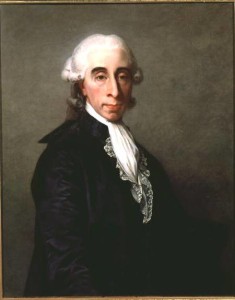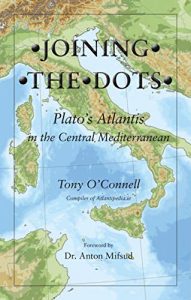Buffon
Bailly, Jean Silvain
Jean Silvain Bailly (1736-1793) was born in Paris and became a renowned astronomer, in which capacity he computed an orbit for Halley’s Comet and studied the four satellites of Jupiter that were then known to science.
He was a frien d of the famous mathematician Laplace and also of Voltaire to whom he wrote his Letters on Atlantis published in 1778. In 2011, the British Library published a facsimile copy of the two volumes of the ‘Letters’ of the 1801 English translation by James Jacque of which letter #23 relates to Atlantis[926]. A modern English translation of letter #23 by Pierre Beaudry is available online(b).
d of the famous mathematician Laplace and also of Voltaire to whom he wrote his Letters on Atlantis published in 1778. In 2011, the British Library published a facsimile copy of the two volumes of the ‘Letters’ of the 1801 English translation by James Jacque of which letter #23 relates to Atlantis[926]. A modern English translation of letter #23 by Pierre Beaudry is available online(b).
>In it, Bailly proposed that the region around Spitzbergen (Svalbard) in the Arctic Sea was the location of Hyperborea and Atlantis; an idea incorrectly thought by some to have been supported by Voltaire.
“Bailly argued that Atlantis was the root civilization of mankind, which had invented the arts and sciences and civilized the Chinese, Indians, and Egyptians.” (c).
Bailly also identified Iceland as Ogygia! He managed to accommodate Plato’s voracious elephants in that Arctic region by proposing that it had a warmer climate in ancient times!<
Bailly’s view was based on a study of Nordic and Middle Eastern mythologies and his conclusions were similar to the theory of his contemporary Buffon who had suggested that the Earth had originally an interior fire that gradually cooled. While this fire burned the northern latitudes were much warmer providing an ideal environment in which Atlantis could flourish. When the fire cooled the Atlanteans moved south. Bailly suggested that this migration brought them to Mongolia and from there to the Caucasus and finally to Phoenicia.
>G.R. Carli who proposed that Atlantis, situated in the Atlantic, had been destroyed by a close encounter with a comet was strongly opposed to Bailly’s Atlantis ideas(d), which he expressed in Le Lettere Americane [087].<
Jean Baptiste Delambre was subsequently to attack the pseudo-scientific theories of Bailly, but while doing so, inadvertently misinterpreted some of Isaac Causabon’s commentary on Strabo, inferring that Aristotle rejected the existence of Plato’s Atlantis. This error was adopted by later writers and gained such widespread uncritical acceptance that this view of Aristotle became ‘received wisdom’. Thorwald C. Franke has now endeavoured to redress that situation with his 2012 book Aristotle and Atlantis[880].
Bailly got caught up in the turmoil of the French Revolution and eventually died after a kiss on the neck from Madame Guillotine. His ideas regarding Atlantis were ignored until Helena Blavatsky integrated some of his concepts into her theosophical musings. This amalgam of Bailly’s and Blavatsky’s beliefs was incorporated into the thinking of the German Thule Society which supported Adolf Hitler(a).
Around Blavatsky’s time in 1885, Dr W. F. Warren published Paradise Found [078] which also proposed that the beginnings of the human race started at the North Pole and had been inundated at the time of the Deluge.
In 1996, Joscelyn Godwin published his Arktos[789] in which he surveys the place of “the Polar Myth in science, symbolism and Nazi survival.”
(a) https://www.bibliotecapleyades.net/sociopolitica/sociopol_vril08.htm
(b) https://amatterofmind.org/Pierres_PDFs/ANCIENT_ASTRONOMY_II/BOOK_III/2._BAILLY’S_LETTERS_ON_PLATO’S_ATLANTIS.pdf (link broken) *
(d) https://arxiv.org/ftp/arxiv/papers/1609/1609.08804.pdf *
